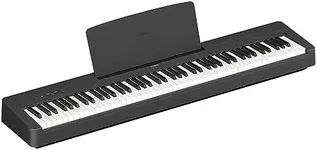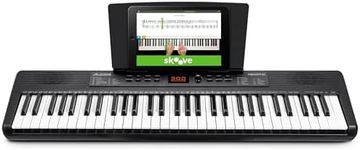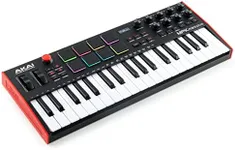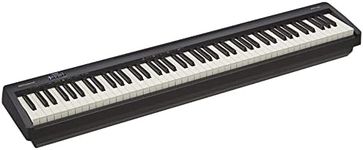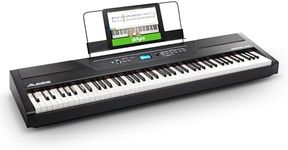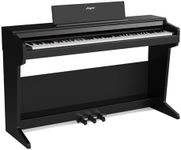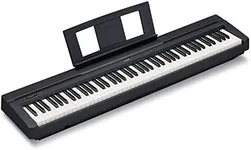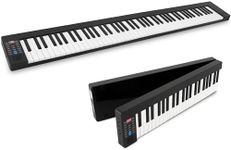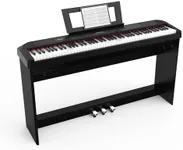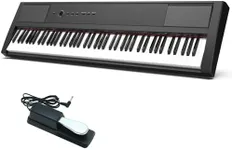Buying Guide for the Best Midi Piano Keyboards
Choosing the right MIDI piano keyboard can greatly enhance your music production and performance experience. MIDI keyboards come in various sizes and with different features, so it's important to understand what each specification means and how it can impact your use. By considering your specific needs and preferences, you can find a MIDI keyboard that fits you perfectly.Number of KeysThe number of keys on a MIDI keyboard determines its range and playability. Keyboards typically come with 25, 49, 61, or 88 keys. A 25-key keyboard is compact and portable, suitable for simple melodies and bass lines. A 49-key keyboard offers more range and is a good middle ground for both portability and playability. A 61-key keyboard provides even more range, making it suitable for more complex compositions. An 88-key keyboard is full-sized, like a traditional piano, and is ideal for classical pianists or those who need the full range of notes. Choose based on your space, portability needs, and the complexity of the music you plan to play.
Key ActionKey action refers to how the keys feel when you press them. There are three main types: synth-action, semi-weighted, and fully-weighted (hammer action). Synth-action keys are light and springy, making them easy to play quickly, which is great for electronic music. Semi-weighted keys have a bit more resistance, providing a more piano-like feel without being too heavy. Fully-weighted keys mimic the feel of an acoustic piano, offering the most realistic experience for pianists. Your choice should depend on your playing style and whether you want a more piano-like feel or a lighter touch for faster playing.
ConnectivityConnectivity options determine how you can connect your MIDI keyboard to other devices. Most MIDI keyboards connect via USB, which is standard for connecting to computers and DAWs (Digital Audio Workstations). Some keyboards also offer traditional 5-pin MIDI ports for connecting to other MIDI hardware. Additionally, some models include Bluetooth for wireless connectivity. Consider what devices you plan to connect to and ensure the keyboard has the appropriate ports. If you plan to use it with a computer, USB is essential. For connecting to other MIDI gear, 5-pin MIDI ports are useful.
Pads and ControlsMany MIDI keyboards come with additional controls such as pads, knobs, and faders. Pads are useful for triggering drum sounds or samples, while knobs and faders can control various parameters in your software, such as volume, panning, and effects. The number and type of controls can vary widely. If you plan to use your keyboard for beat-making or live performance, having more pads and controls can be very beneficial. Think about how you will use these features and choose a keyboard that offers the right amount and type of controls for your workflow.
Software CompatibilitySoftware compatibility refers to how well the MIDI keyboard integrates with your music production software. Some keyboards come with bundled software or are designed to work seamlessly with specific DAWs. Check if the keyboard is compatible with the software you use or plan to use. This can save you time and effort in setting up and ensure a smoother workflow. If you are new to music production, consider a keyboard that comes with beginner-friendly software to help you get started.
Build Quality and PortabilityThe build quality of a MIDI keyboard affects its durability and feel. Higher-quality materials and construction can provide a more satisfying playing experience and longer lifespan. Portability is also a consideration if you plan to travel with your keyboard. Lighter, more compact models are easier to transport, while larger, sturdier models may be better suited for a permanent setup. Think about where and how you will use the keyboard and choose one that balances build quality and portability according to your needs.


